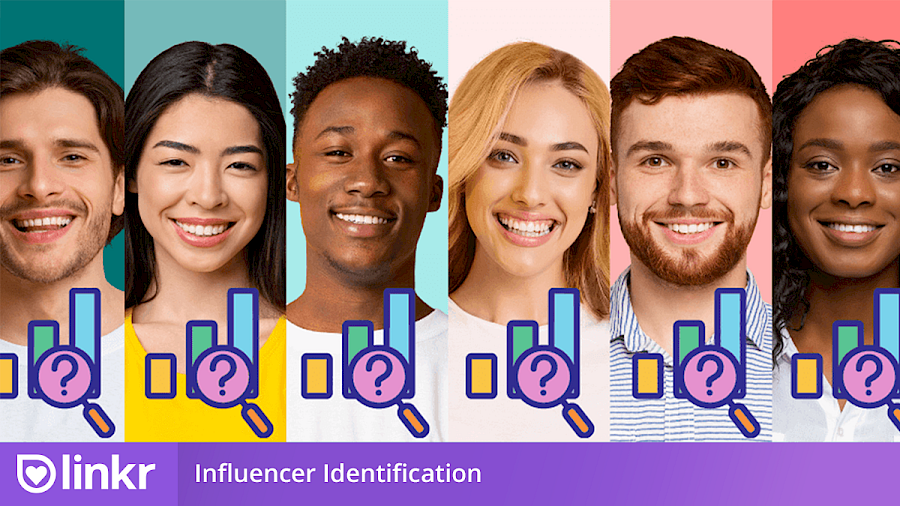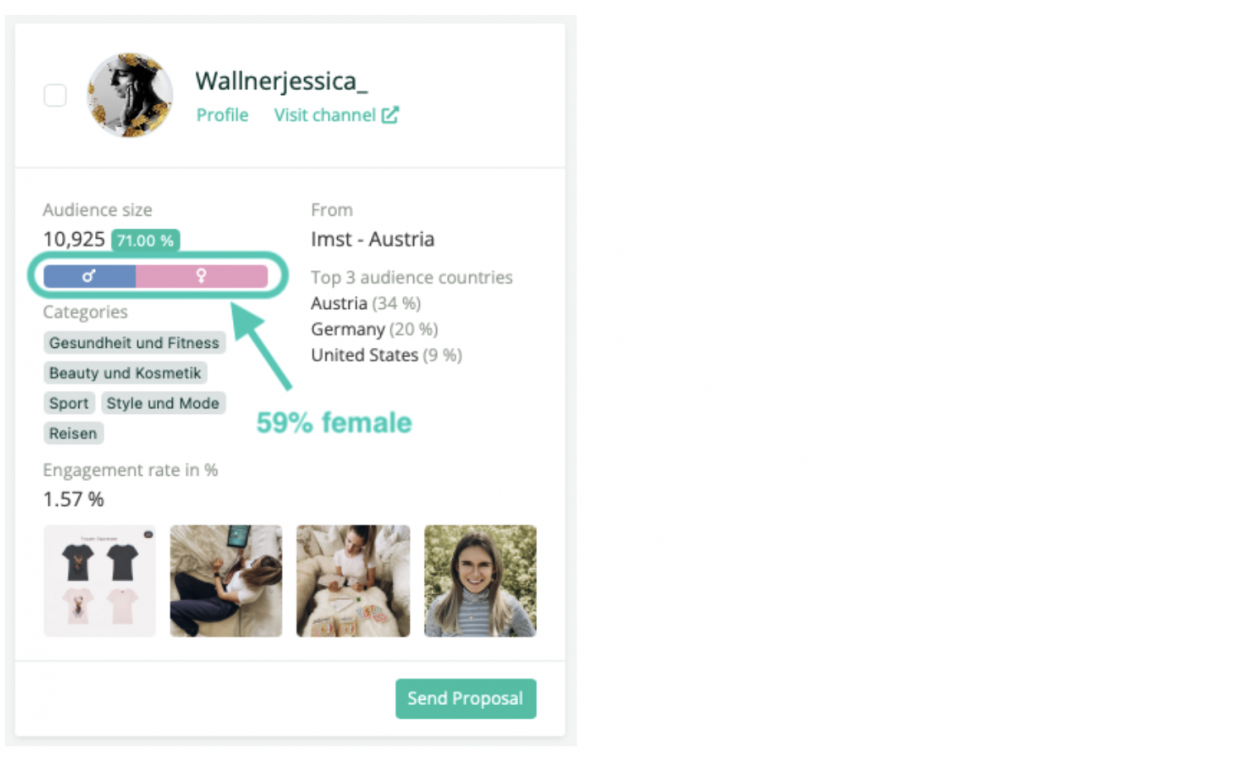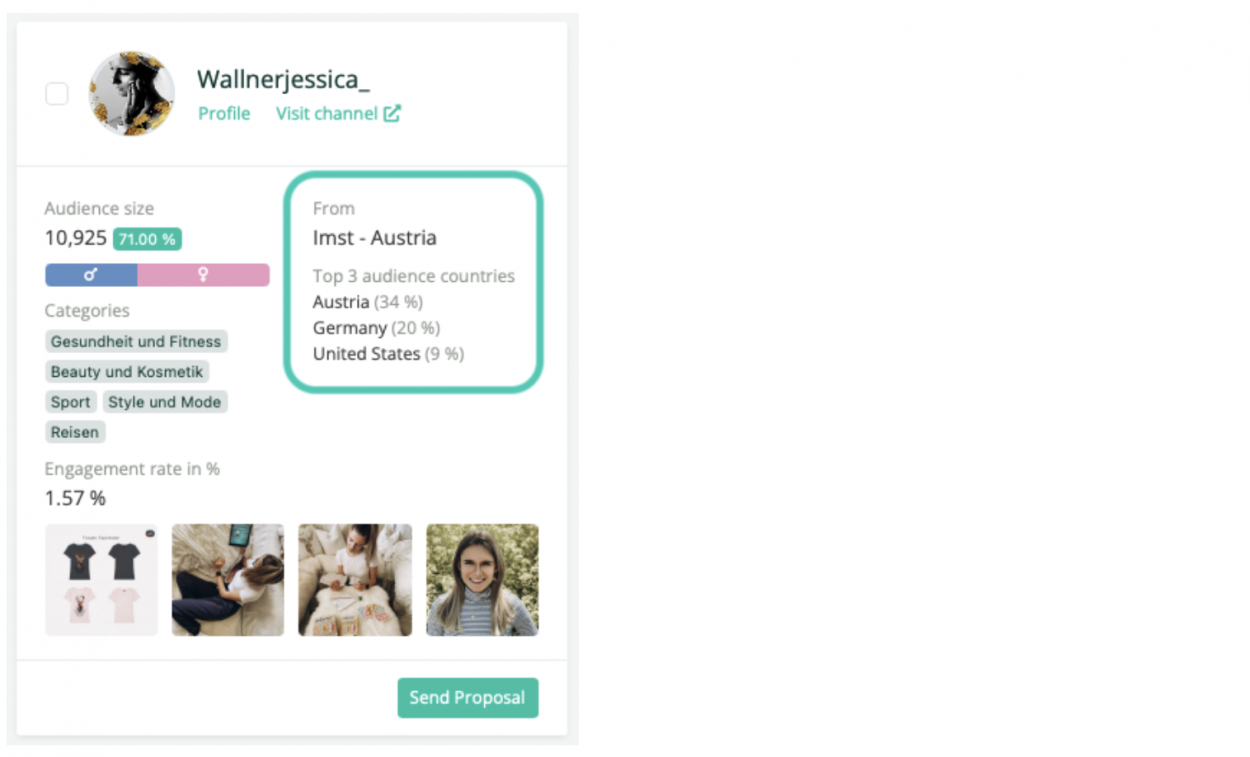We’ve said it many times before. Yes, we’ve said it so often, you’re probably tired of hearing it by now:
Selecting the right influencers is one of the most important tasks (if not the most important task) to make your campaign a success.
There are quite a few other things that can go wrong, sure. But even if you nail everything else, selecting the wrong batch of influencers is going to tank your campaign.
But yes, you knew that, didn’t you. No one would ever argue with that. It’s rather obvious.
What’s much more interesting is some hands on advice on how to avoid selecting the wrong influencers.
So enough with truisms. Let’s dig into some key metrics you need to look at when making your choices.
1. Audience Size
Surprise…
Well, admittedly, audience size is the most basic metric you can look at. The more followers (audience) an influencer has, the more people will see your brand, when featured on the influencer’s post.
OK, that might be true at first glance. Taking a closer look at some of the metrics following further down though, will often reveal how wrong that can be and that big is not necessarily better.
2. Engagement Rate
Quality of created content is something very subjective. Beauty is in the eye of the beholder.
You can (and should) check for things like a coherent, visual theme, a beautiful look and feel overall, premium image quality, good sound on videos, etc. But at the end of the day, a well done post can still be dull.
Engagement rate, as the name suggests, allows you to quickly assess how engaging content from an influencer is. In other words, if people find the influencer’s content interesting, funny, beautiful,... enough to like, share, save, comment,...
Example: If an influencer with 1,000 followers posts an image and 80 people actively interact with the content (like, comment, etc.) then the engagement rate is calculated as follows:
Engagement Rate = 80 / 1000 * 100 = 8%
One thing that can be observed here on most platforms is that engagement rate degrades the more followers an influencer has. Without tapping into too much detail on why that is here, it largely has to do with how our brain is wired (we’re more likely to react to close than loose relationships) and the amplification of that fact by platforms, factoring that into their feed algorithms.
So far, so good.
You can check the audience size of a profile by simply visiting it.
You can further examine how many likes, comments, etc. posts from that profile are getting on average and then make a rough engagement rate calculation. Admittedly, that bit starts to get a little painful once you’ve got to do it for more than a handful of profiles - but in theory, it’s doable.
Even though simple in nature, the next few metrics are a lot harder (or even impossible) to assess on your own. You’ll either need a tool such as linkr or ask the influencer to send you screenshots of their performance metrics instead.
3. Gender Split
If your target audience is female, then working with female influencers, assuming all will be fine, simply isn’t going to cut it. You want to know how many of the influencer’s followers are female and thus potentially within your target audience.
In the example of influencer wallnerjjessica, you can see how linkr allows you to assess just that. Out of the 10,925 followers, 59% are female and 41% male.
4. Country Split
It’s a similar story with the audience country split.
Only because an influencer is from a certain country, it doesn’t necessarily mean that all of the followers will be too.
It’s true that language matters here - e.g. someone speaking Italian will have a large portion of Italian followers. However, it’s not always going to be that black and white.
Someone speaking German might have followers in Austria and Switzerland that aren’t relevant for you. Someone speaking Spanish might have followers from Mexico when you’re only able to sell to Spain. The influencer might post in English altogether.
So you better check where those followers are really from, before deciding if you’d like to engage in a cooperation or not.
5. Audience Reachability
Any account will always have a certain number of followers that are NOT active. Active as in logging on to the social network in question in regular intervals, consuming content, leaving a like here or there,...
In addition, any account will also have a certain amount of bots, fake accounts or impersonators following them.
That doesn’t mean that the influencer has bought a fake audience or is trying to trick you. Fake accounts are just part of the game on any social network and usually networks do a rather mediocre job in policing that for a variety of reasons (but that’s a different story).
What’s important for you is to check how many of the influencer’s followers are estimated to be “active and real” (93% in the example of influencer dielanasophie) and can thus be reached by your campaign.
Alright, we’ve locked down the first few key metrics to make sure you pick the right influencers for your next campaign. Feels reassuring, doesn’t it?
There’s more to come though! Stay tuned for PART 2…







